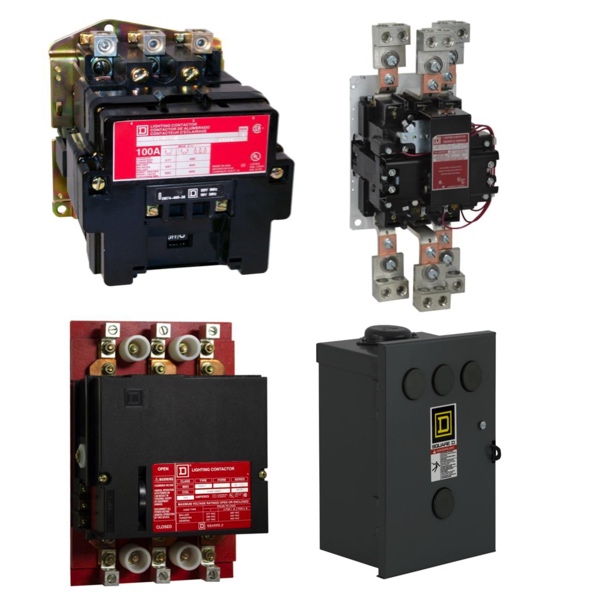Lighting Contactors

Lighting contactors are a necessary component of a load management system for lighting in non-residential structures. These contactors work with discharges of electricity to turn on and off light sources; thus, the contactors themselves must be versatile enough to work with a variety of light types, from fluorescents to tungsten. Even with the incandescent and fluorescent bulbs that dominate commercial lighting systems, a programmer has quite a few options to control the lights.
With unprecedented versatility, lighting contactors are available in a range of configurations to meet control requirement needs. They consist of several contacts that work together to control lighting loads without compromising safety or the durability of the components. They can be installed at any location—in the field, in a control cabinet, or mounted remotely—while providing a simple user interface that obscures any complexity in the control logic. Their simplicity of operation makes them a good choice for heavy-duty low-maintenance lighting applications in commercial and public spaces.
More Information about Lighting Contactors
Lighting contactors are suitable for a range of lighting control accessories, including incandescent-filament lamps, fluorescent lights, high-intensity discharge (HID) lamps, and tungsten-halogen bulbs. They can handle the high initial currents associated with these kinds of lighting. In general, they work well when the loads are not too high or too inductive; ideally, they should be used with motors and discernible heating elements.
FAQs
What is a ballast?
A ballast is an electrical device that regulates the current to fluorescent and HID lamps, ensuring they receive the correct voltage and current to start and operate efficiently.
What is meant by "electrically held" lighting contactors and how is their performance in industrial lighting applications?
Electrically held lighting contactors require continuous electrical power to maintain their closed position, offering high performance in industrial lighting applications by providing energy-efficient operation, remote control capability, and reliable switching.
Motor Control Basics
Motor control allows operational control of electrical motors in various environments.
Motor control circuits provide a safe way to operate electrical motors. Back when motor control circuits were in their infancy, it would have been common to see a simple disconnect switch that would be used to turn on and off a motor. Depending on the size of the motor and how much voltage was required, operating this disconnect would have been dangerous, with a very high possibility of arcing or electrocution. Not to mention that when the disconnect was actuated, the large amount of inrush current would have damaged the motor over time.
In today's motor control circuits, there are a few common pieces of hardware.
A circuit breaker is used to protect the motor and any hardware downstream. A contactor and an overload relay are connected together and function in tandem to allow for remote and safe operation of the motor. The contactor functions much like a relay, allowing for a smaller electrical circuit to remotely close the motor contacts, starting the motor. The overload relay is designed to protect the motor in the case of a prolonged overcurrent event. These two devices are wired in series, so that if the overload relay detects an overcurrent event, the contactor will open the motor contacts, shutting off power to the motor.
The other two most common types of motor control hardware are a soft starter and a Variable Frequency Drive (VFD).
Both of these devices function in a similar way to the motor circuit with some added functions. The soft starter is designed to reduce large inrush current to the motor upon startup. This “soft starting” of the motor will prolong its life and allow for safer operation. The VFD performs the soft start functions, but also allows for speed control of the motor. This speed control is critical in many different environments and has made VFDs one of the most common and safe to use motor control circuits today.

